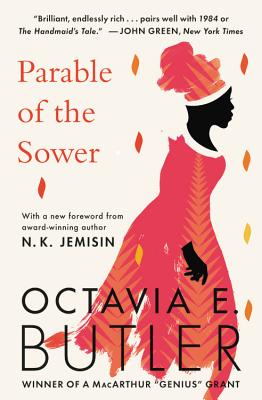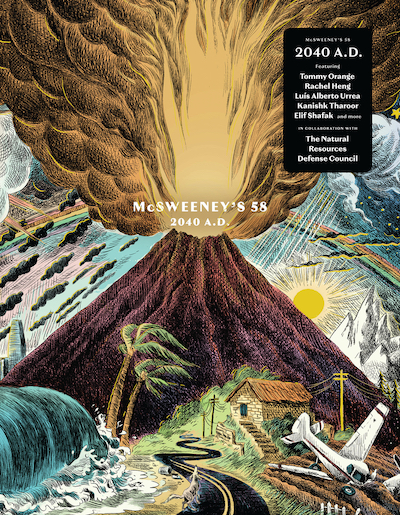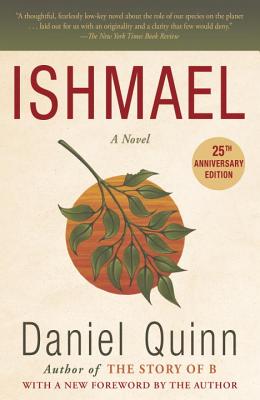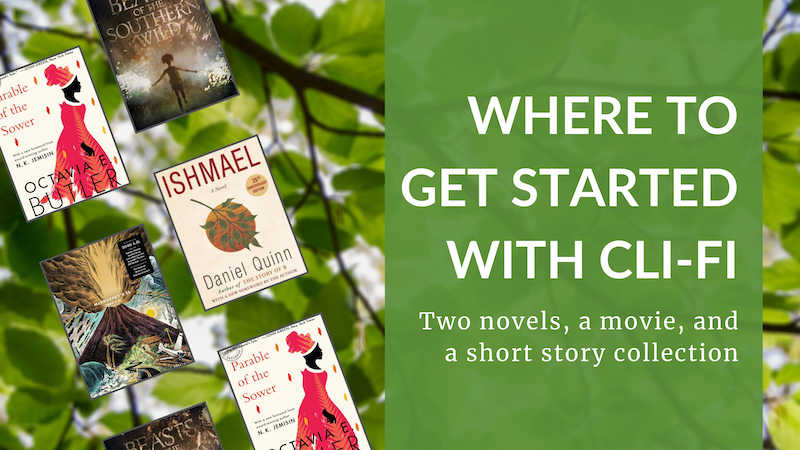Stories for Earth relies on contributions from our listeners and readers to produce high quality, in-depth content. If you buy something using the links on our website, we may earn a small commission, at no extra cost to you. For more information, see our Affiliate Disclosure.
Climate fiction (cli-fi) has soared in popularity in recent years with the increased awareness about the dangers of climate change. This is certainly a good thing—cli-fi can help a macro threat like climate change seem more relatable, and many cli-fi readers feel more motivated to demand climate action. While I’m thrilled to see more authors and filmmakers embracing the burgeoning cli-fi genre, readers sometimes feel overwhelmed looking at all the options.
And just like any genre, there are good and bad works of cli-fi. I started getting into cli-fi in the summer of 2019, and since then, I’ve done a lot of research trying to find the best stories to spotlight on the Stories for Earth podcast. Here are my recommendations on where to start with cli-fi, in no particular order.
“Parable of the Sower” by Octavia E. Butler

If you’ve heard of cli-fi, you’ve probably heard of Parable of the Sower. Widely regarded as a cli-fi masterpiece and loved by none other than John Green, this 1993 novel from Octavia E. Butler might be the best place to start if you’re looking for a cli-fi book.
Parable of the Sower tells the story of Lauren Olamina, a young girl growing up in Southern California in the 2020s. The climate crisis is in full swing, leading to the breakdown of social order and governments around the world, including the United States. After a gang of drug addicts burns her town to the ground and murders her family, Lauren sets off on a journey to Northern California, where things are supposedly better.
Listen to the episode: Parable of the Sower by Octavia E. Butler
Trying to make the trip while struggling with a birth defect called hyperempathy—the ability to feel what others are feeling—Lauren meets a number of misfits along the way who join her on the journey. To survive not only the dangers of the road but also a rapidly changing climate, Lauren and friends must learn to work together, become self-sufficient, and develop a philosophy of resilience to help them navigate a troubled time that feels eerily similar to our own.
“Beasts of the Southern Wild”
Released in 2012, Beasts of the Southern Wild is a stunning, magical movie about a girl named Hushpuppy, melting ice, intense storms, and rising sea levels. When a powerful storm hits the fictional Louisiana bayou town called the Bathtub, Hushpuppy and her father Wink must fight to survive against devastating flooding, a forced FEMA evacuation, and a herd of mythical beasts called Aurochs that come to destroy the Bathtub once and for all.
Listen to the episode: Beasts of the Southern Wild, Hurricane Katrina, and Climate Change
Beasts of the Southern Wild is a tragically underrated film, even though it won numerous awards following its release. In addition to the obvious theme of rising sea levels, this film also explores environmental racism and how climate change disproportionately affects the people least responsible for causing it. In 2012 it may have seemed like a story about Hurricane Katrina, but today it seems more reminiscent of Terrebonne Parish—a Louisiana parish that is literally being swallowed by rising sea levels.
I love Beasts of the Southern Wild so much because of how unapologetically joyful it is. In some ways, it’s a story about the end of the world, but it’s also a story about how painfully beautiful and stubborn life is. Instead of trying to spin a tale of hope, the film uses Hushpuppy to make a courageous statement: “You want to destroy my beloved home? Fuck you. I’m not going anywhere.”
McSweeney’s Issue 58: “2040 A.D.”

Recommendation lists like this one sometimes exclude short story collections, and I think that’s a damn shame. Short stories are one of my favorite forms of storytelling, and they can convey just as much meaning and pathos as films and novels. There are many short story collections centered around the theme of climate change, but my favorite collection I’ve read so far is McSweeney’s Issue 58: 2040 A.D.
You may know McSweeney’s for their witty humor pieces, but 2040 A.D. packs a more sobering punch. Featuring ten stories set in the year 2040 in locations all over the world, 2040 A.D. imagines what life might look like if the world continues on a business-as-usual course toward the outcomes outlined in the IPCC’s Special Report on Global Warming of 1.5ºC.
Made in collaboration with the Natural Resources Defense Council (NRDC) and with stories from acclaimed authors like Tommy Orange and Luis Alberto Urrea, 2040 A.D. is a creative and, yes, terrifying, glimpse into what kind of world we could inhabit in 20 years’ time. And, if you’re a sucker for books with pictures like I am, illustrations by Wesley Allsbrook make this collection just as nice to look at as it is to read.
“Ishmael” by Daniel Quinn

I probably wouldn’t have heard about this book were it not for a past co-worker giving it to me for my birthday one year (thanks Dan!). And while you could quibble about whether Ishmael by Daniel Quinn is cli-fi, I’m including it in this list because I think it gets so many things right about how we should respond to the climate crisis.
Two quotes from the book sum up my biggest takeaways from it. Here’s the first one: “There is no one right way to live.” The second one is slightly longer:
“…people need more than to be scolded, more than to be made to feel stupid and guilty. They need more than a vision of doom. They need a vision of the world and of themselves that inspires them.”
Listen to the episode: Ishmael by Daniel Quinn, Climate Change, and Moving Beyond a Vision of Doom
I hear about how the climate movement needs better storytelling all the time, but a lot of people don’t know how to tell stories about climate change. This isn’t their fault—we humans didn’t evolve to deal with macro threats like anthropogenic climate change. How do you scale down something so enormous to make it more relatable?
Ishmael doesn’t pretend to have the answers, either—that’s for today’s artists and storytellers to discover—but it does give us some ideas on where to start. We need to be inspired, and we need to rewrite our society’s suicidal mythology that places humans at the center of the universe. If we can work towards this vision while remembering that there is no silver-bullet solution to climate change, we will have a better chance of navigating the future.
There’s plenty more to explore
These are four of my favorite works of cli-fi, but this genre is exploding right now. At a time when global climate change is one of the biggest threats to life on Earth, I think it’s never been more important to get into cli-fi. Cli-fi doesn’t give us the answers for stopping climate change, but it can help inspire us to take action and teach us what it looks like to be a resilient person, community, and society.
Wherever you decide to begin with climate fiction, I hope you discover something about the urgency of the crisis and why fighting for what you love is always worth it.

